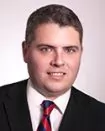On May 23, 2024, the NCAA reached a historic $2.8 billion settlement with former college athletes who had filed an antitrust class action demanding billions in potential compensation allegedly denied to them for decades. This represents a major turning point in college athletics.
Background
The proposed settlement covers three of the major class action antitrust lawsuits brought against the NCAA: House v. NCAA, Hubbard v. NCAA and Carter v. NCAA—all from athletes claiming the NCAA violates the Sherman Act. House v. NCAA, the leading case, was filed in 2020 by former Arizona State swimmer Grant House and TCU/Oregon basketball player Sedona Prince. House and Prince sued the NCAA for barring name, image and likeness (NIL) payments for athletes prior to 2021—when the NCAA changed its rules to allow NIL. The plaintiffs in House alleged that the NCAA's rules prohibiting athletes from receiving such compensation and payments was a violation of Section 1 of the Sherman Act by way of an alleged conspiracy to fix prices, group boycott or refusal to deal. House also raised issues and claims concerning the current NIL world, specifically concerning the lack of TV broadcast revenue gained by players. In the complaint, the plaintiffs (House and Prince) allege that the conferences conspired with the NCAA to exploit student-athlete labor and effort without legal representation and to limit the compensation athletes can receive. In addition, they claim the NCAA's restrictions on NIL and control of TV markets prevent athletes from profiting on their true market value, which is more than scholarships and education funding.
In the House class-action lawsuit, the NCAA and its Power Five conferences (the Atlantic Coast Conference, Big Ten Conference, Big 12 Conference, Pac-12 Conference and Southeastern Conference) agreed on May 23, 2024, to allow Division I college athletes to receive pay directly from the universities they compete for—a complete departure from the NCAA's long-standing system of "amateurism." The announced settlement includes, but is not limited to, the NCAA agreeing to pay upward of $2.75 billion in back-pay damages to former Division I athletes who were unable to profit on their NIL rights, as well as a future revenue sharing model between the Power Five conference schools and athletes.
This settlement announcement is in line with the federal courts chipping away at the NCAA's long-standing prohibition against student-athletes monetizing their athletic abilities. The settlement is not yet finalized and still must be approved by Judge Claudia Wilken in the coming weeks or months.
Where Is the Settlement Money Coming From?
Under the settlement agreement, the NCAA would be responsible for roughly $1.2 billion from reserves, or 41 percent of the more than $2.75 billion. The Power Five conferences would be responsible for about 24 percent in withheld future revenues, the Group of Five conferences (the American Athletic Conference, Conference USA, Mid-American Conference, Mountain West Conference and Sun Belt Conference) for about 10 percent, Football Championship Subdivision (FCS) schools for about 13 percent and Division I schools without football programs about 12 percent.
If the settlement becomes final, the financial hit for athletic departments, especially among major conferences, will be significant. While the NCAA can absorb the main share of the cost via its reserves, insurance and budget cuts, the schools themselves do not possess that same benefit. In particular, certain schools are expected to lose as much as $30 million per year over the next 10 years to cover revenue-sharing distribution, back damages and expanded scholarship costs.
As a result of these massive hits to the Power Five conference schools, the NCAA is considering removing the cap on guaranteed scholarships across sports. Instead of limiting compensation, the NCAA could attempt to protect competition by focusing on roster sizes. For example, football teams can currently field 120 players but are limited to 85 scholarships. In a future system, rosters could shrink to 100 players, but all of them could be on scholarship.
In response to this proposed breakdown, many of the smaller Division I schools have voiced concerns. Specifically, there is a sentiment among the smaller programs that the model puts a disproportionate financial responsibility on them, particularly since the House lawsuit was aimed largely at Power Five conference programs.
Revenue Sharing
As a condition of the settlement agreement, athletic departments will be permitted to engage in a direct revenue share from television contracts and ticket sales with student-athletes. The settlement release specified that the 22 percent of the average of Power Five conference programs revenues allotted for revenue sharing is for the first year of the settlement—it will increase over time—and that the 22 percent would translate to an amount projected to be "significantly more than $20 million per school, per year." Thus, on the program level, the settlement would create a system in which approximately $20 million is distributed to players. That amount represents an estimated 22 percent of annual revenue for Power Five schools, but it will hit many programs disparately.
While the settlement opens the door for revenue sharing, it does not set any terms for the practice. Those details will be ironed out over the next several months. The details could radically impact how effective the practice is over the next several years. As of now, it is likely that each school will decide how to distribute money and which athletes receive it. Of course, with factors like Title IX taken into account, the NCAA and/or schools will need to develop a strategic plan in ensuring their distribution plan is compliant.
Is This Settlement Finalized?
Despite an announced agreement between the two sides, none of the settlement details are finalized. For a class-action settlement, the terms must be submitted for preliminary approval to Judge Wilken, which is expected to happen within the next 30-45 days. If preliminary approval is granted, there would then be a set period of several months in which those in the retroactive damages and future revenue-sharing classes are notified and have an opportunity to either opt out or object to the terms of the agreement, depending on the judge's ruling. That will be followed by a final approving hearing, at which point, if the judge approves it, the settlement officially goes into effect.
Ongoing Legal Questions to Consider
While the settlement details are being finalized and submitted for approval, more questions linger. To that point, the settlement only resolves three antitrust cases. It does not settle prospective antitrust lawsuits against the NCAA or ongoing ones. For example, on May 23, 2024, U.S. District Judge Charlotte Sweeney ruled that a separate and very similar case, Fontenot v. NCAA, is not part of the House settlement at this time. The case raises familiar arguments, namely that colleges conspire through NCAA rules to deny athletes of compensation they would receive if the market operated without NCAA restraints. However, this case was filed in Colorado. It is possible that the Fontenot lawsuit could be added to the House settlement if and when the settlement is approved by Judge Wilken, but its continued presence highlights the limited universe in which the House settlement operates. The House settlement would also not resolve ongoing and prospective legal efforts regarding college athletes gaining recognition as employees of their school, conference and the NCAA and potentially unionizing.
There are also a number of other legal questions that remain unresolved. For example, questions remain about how the revenue-sharing model for Power Five conferences will fit into the Title IX policy, with proportional payments required to men's and women's athletics.
It's also unclear what impact, if any, the House settlement could have on the role of third-party NIL collectives, which currently operate outside athletic departments and have developed an unregulated pay-to-play culture. There has been talk in recent months of the NCAA allowing athletic departments to operate those NIL collectives in house, which could raise a number of additional legal questions. One such concern is that the trickle-down effect that these new financial requirements will have on athletic departments, including the possibility of schools cutting sports, athlete resources or administrative positions at both the Power Five and other schools. At the same time, the House settlement would further establish the gap between those two groups, and could fuel the debate over a years-from-now separation of high-revenue football and basketball programs into some version of super conferences or a super league.
For More Information
If you have any questions about this Alert, please contact Sean P. McConnell, Andrew John (AJ) Rudowitz, Bryan Shapiro, any of the attorneys in our Antitrust and Competition Group, any of the attorneys in our Sports Group or the attorney in the firm with whom you are regularly in contact.
Disclaimer: This Alert has been prepared and published for informational purposes only and is not offered, nor should be construed, as legal advice. For more information, please see the firm's full disclaimer.



